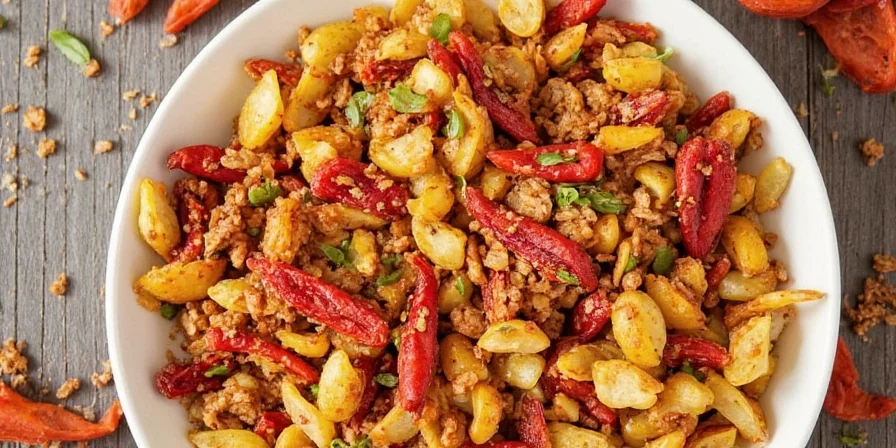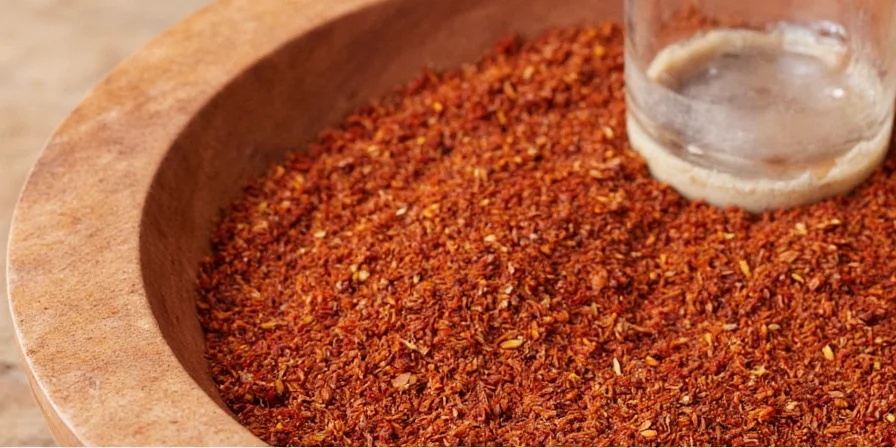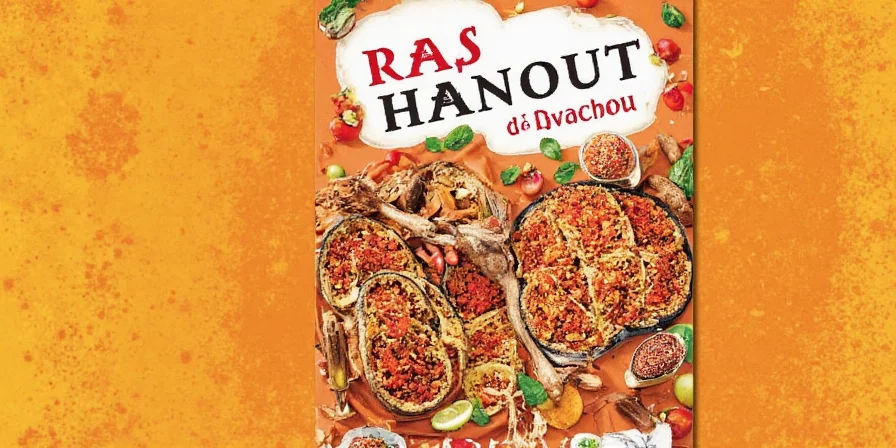Ras Hanout Unveiled: 7 Spicy Secrets That’ll Transform Your Kitchen (With Tasty Twists)
If you’ve ever tasted a dish and thought, "What wizardry is this?", there’s a good chance ras hanout was involved. This mysterious Moroccan spice blend has more layers than your grandma’s lasagna—and it might just be the secret weapon your pantry has been missing.
Table of Contents
- What Exactly Is Ras Hanout?
- The Chemistry Behind the Magic
- How to Use It Like a Pro
- DIY Ras Hanout: Customize Like a Chef
- Global Dishes You Can Spice Up
- Storage Tips to Keep It Fresh
- Myths vs Facts: Busting Common Misconceptions
- Conclusion
What Exactly Is Ras Hanout?
The phrase "ras hanout" literally translates to "head of the shop" in Arabic—because back in the day, spice merchants would throw their best stuff into one magical mix to show off their wares. Think of it as the chef's tasting menu of the spice world.
This isn’t a fixed recipe—it varies from region to region, vendor to vendor, and even family to family. But most blends include cumin, coriander, cinnamon, ginger, paprika, turmeric, cardamom, nutmeg, clove, and black pepper. Some versions get wild with ingredients like dried rose petals or even animal-derived musk (not so common these days).
Traditional Ingredients in Ras Hanout (Common Variants)
| Spice | Flavor Profile | Common Use |
|---|---|---|
| Cumin | Earthy, nutty, warm | Meat rubs, stews |
| Coriander | Citrusy, floral | Soups, legumes |
| Cinnamon | Sweet, woody | Desserts, tagines |
| Ginger | Peppery, zesty | Marinades, sauces |
| Paprika | Smoky, sweet, red-hued | Color boost, garnish |
| Turmeric | Earthy, slightly bitter | Golden hue, anti-inflammatory |
| Nutmeg | Warm, nutty, intense | Slow-cooked dishes |
| Clove | Sharp, sweet, medicinal | Stewing spices, meats |


The Chemistry Behind the Magic
Spice chemistry can be more complex than your high school crush—but here’s the simplified version:
- Cinnamaldehyde in cinnamon gives that warm sweetness.
- Curcumin in turmeric offers its golden glow and health benefits.
- Limonene from coriander adds citrus notes.
- Eugenol from cloves gives that numbing warmth.
Together, they create what flavor scientists call a “spice synergy”—where the whole is greater than the sum of its parts.
How to Use It Like a Pro
Using ras hanout isn’t rocket science, but a few tricks can elevate your game:
- Meat Rubs: Mix with olive oil, lemon juice, garlic, and slather on lamb chops or chicken thighs before roasting.
- Vegetable Boost: Toss root vegetables (carrots, parsnips, sweet potatoes) in ras hanout and roast until caramelized. Game-changing!
- Grain Enhancer: Stir a teaspoon into couscous or quinoa while cooking for instant flavor lift.
- Oil Bloom: Toast a pinch in hot oil before adding other ingredients to bloom the flavors.
- Soup & Stew Base: Add a tablespoon when sautéing onions and garlic at the start of cooking.
Pro Tip: The Golden Ratio
Aim for balance between earthy (cumin, coriander), sweet (cinnamon, nutmeg), and warming (cloves, ginger). Too much clove? It'll taste like your dentist’s office. Too little? Missing that signature depth.


DIY Ras Hanout: Customize Like a Chef
Buying pre-made ras hanout is convenient, but making your own lets you tailor the flavor to your tastes—and impress your dinner guests with stories like, “This blend? My great-grandmother’s secret from Fez.”
Basic DIY Recipe
- 2 tbsp ground cumin
- 2 tbsp ground coriander
- 1 tbsp smoked paprika
- 1 tbsp ground ginger
- 1 tbsp ground cinnamon
- ½ tbsp ground turmeric
- ½ tbsp ground cardamom
- ¼ tbsp ground nutmeg
- ¼ tbsp ground clove
Customization Ideas
| Goal | Add These |
|---|---|
| For Heat | Cayenne pepper, chili powder |
| For Smokiness | Smoked paprika, chipotle powder |
| For Floral Notes | Rose petals, orange blossom water (sprinkle lightly after mixing) |
| For Umami | Fennel seed, celery seed |

Global Dishes You Can Spice Up
You don’t have to stick to Moroccan cuisine to use ras hanout. Here are some surprising pairings:
- Mexican Fusion: Sprinkle into tacos al pastor instead of traditional adobo.
- Italian Remix: Add to pasta sauce for a North African twist on bolognese.
- Asian Fusion: Mix into curry bases for Thai or Indian-inspired dishes with a new dimension.
- Western BBQ: Use as a dry rub for brisket or ribs—yes, really.
- Baked Goods: Add a dash to chocolate brownies or pumpkin bread for a spiced surprise.
Storage Tips to Keep It Fresh
Spices aren’t immortal. Treat them right, and they’ll love you back:
- Store in airtight glass jars away from heat and light.
- Label with the date—you should aim to use within 6 months for peak potency.
- Consider dividing into two portions: daily use and special occasions. Keeps the magic alive!
Myths vs Facts: Busting Common Misconceptions
| Myth | Reality Check |
|---|---|
| Ras hanout is always super spicy. | Actually, it’s more about complexity than heat. Most blends are moderately warm, not fiery. |
| All ras hanout is the same. | Nope! There are hundreds of regional variations—even between households in Morocco. |
| Only Moroccans can use it authentically. | Please. Food doesn't care about borders. Cook it any way you like! |
| You must use all the spices listed. | Not at all! Customize based on what you have or prefer. Even top chefs do it. |
| It’s too complicated for home cooks. | As long as you respect the flavor balance, anyone can master it. |

Conclusion
Ras hanout is more than a spice blend—it’s a passport to flavor adventures. Whether you’re marinating meat, spicing up veggies, or experimenting with fusion dishes, this North African treasure can transform your cooking with just a spoonful.
So go ahead, embrace the chaos of spice blending, customize it to your heart’s content, and let your kitchen smell like a Moroccan market stall. Who knows? You might just become the next neighborhood spice guru.











 浙公网安备
33010002000092号
浙公网安备
33010002000092号 浙B2-20120091-4
浙B2-20120091-4